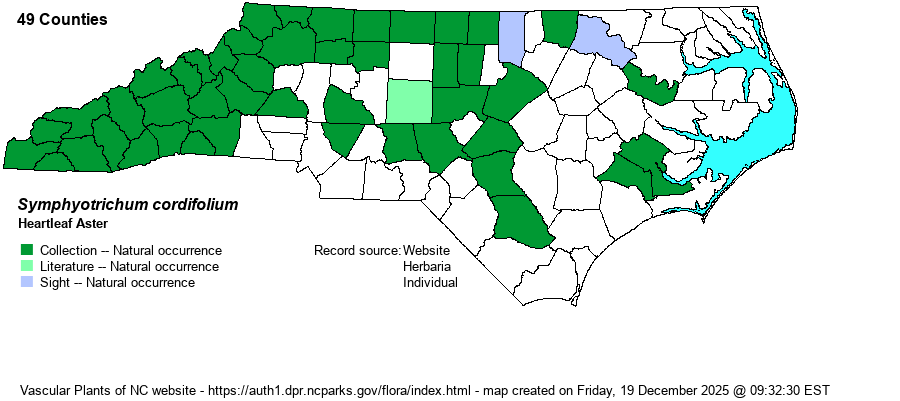| taxonName | relationship | relatedTaxonName | relatedTaxonRefText | relComments |
|---|
|
|
|
|
|
| Symphyotrichum cordifolium | < | Aster cordifolius | Radford, Ahles, and Bell (1968) | (also see S. lowrieanum) |
| Symphyotrichum cordifolium | = | Aster cordifolius | Gleason and Cronquist (1991) | |
| Symphyotrichum cordifolium | = | Aster cordifolius | Gleason (1952) | |
| Symphyotrichum cordifolium | = | Aster cordifolius | Small (1933, 1938) | |
| Symphyotrichum cordifolium | = | Aster cordifolius | Vascular Flora of the Southeastern States (Cronquist 1980, Isely 1990) | |
| Symphyotrichum cordifolium | = | Aster cordifolius | Wofford (1989) | |
| Symphyotrichum cordifolium | > | Aster cordifolius var. cordifolius | Fernald (1950) | |
| Symphyotrichum cordifolium | > | Aster cordifolius var. cordifolius | Flora of West Virginia | |
| Symphyotrichum cordifolium | > | Aster cordifolius var. polycephalus | Fernald (1950) | |
| Symphyotrichum cordifolium | > | Aster cordifolius var. racemiflorus | Fernald (1950) | |
| Symphyotrichum cordifolium | > | Aster cordifolius var. racemiflorus | Flora of West Virginia | |
| Symphyotrichum cordifolium | < | Symphyotrichum cordifolium | Flora of North America (1993b, 1997, 2000, 2002a, 2002b, 2003a, 2004b, 2005, 2006a, 2006b, 2006c, 2007a, 2009, 2010) | (also see S. lowrieanum) |
| Symphyotrichum cordifolium | > | Symphyotrichum cordifolium var. cordifolium | Xiang & Semple (1996). Key to subgenus Astropolium based on Nesom (2005b). | |
| Symphyotrichum cordifolium | > | Symphyotrichum cordifolium var. polycephalum | Xiang & Semple (1996). Key to subgenus Astropolium based on Nesom (2005b). | |
| Symphyotrichum cordifolium | > | Symphyotrichum cordifolium var. racemiflorum | Xiang & Semple (1996). Key to subgenus Astropolium based on Nesom (2005b). | |
| Source: Weakley's Flora |

